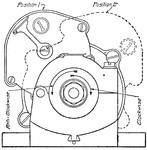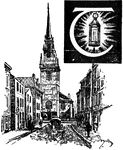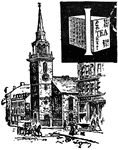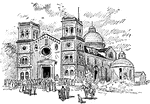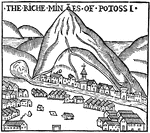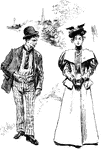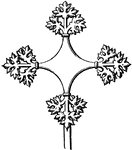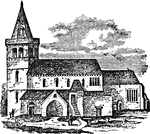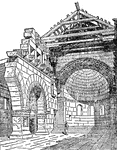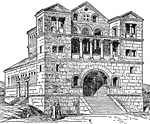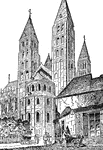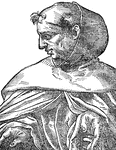
Albertus Magnus
Albertus Magnus was also known as Albert of Cologne and Saint Albert the Great. Magnus was a great German…
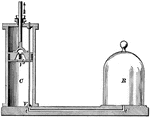
Air Pump
"The air pump is an instrument for removing air from a given space. A closed vessel R is called the…
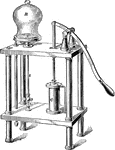
Air Pump
"The air pump is an instrument for removing air from a given space. A closed vessel R is called the…
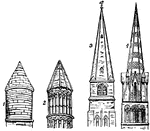
Spire
"1, Turret, St. Peter's Church, Oxford; 2, Turret, Rochester Cathedral; 3, St. Mary's Church, Cheltenham;…

English House Clock
"A front view of a common English house clock with the face taken off, showing the repeating or rack…

Quarter Clock
"The front view of a large quarter clock of Sir E. Beckett's design, with all the wheels on the great…

Coal-cutting Machine
"This machine consists essentially of a horizontal piston and cylinder engine fixed upon a platform…
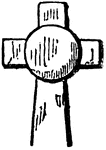
Worcestershire
"The gable cross of Washburn Chirch in Worcestershire." — Encyclopedia Britannica, 1893

Dannebrog
"The cross of the Danisn order of the Dannebrog, a white cross surmounting a red one, with the royal…

Escorial
"One of the most remarkable buildings in Europe, comprising at once a convent, a church, a palace, and…

Escorial
"One of the most remarkable buildings in Europe, comprising at once a convent, a church, a palace, and…
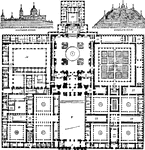
Escorial
"One of the most remarkable buildings in Europe, comprising at once a convent, a church, a palace, and…
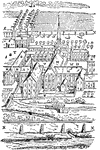
Bird Eye View of Citeaux
A. Cross, B. Gate-house, C. Almonry, D. Chapel, E. Inner gate-house, F. Stable, G. Dormitory of lay…

Medieval Amice
Three examples of the medieval method of putting on the amice. The amice is a liturgical vestment used…

Aisle
"Any lateral division of any part of a church, whether nave, choir or transept. The number of aisles…

Apse
"A semicircular recess usually placed at the east end of the choir or chancel of a romanesque, or what…
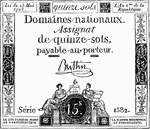
Assignat
"After appropriating to national purposes the land belonging to the church, the French National Assembly,…

Baptistery
"A name given sometimes to a seperate building, sometimes to the portion of the church itself in which…

Dalmatic
"The deacon's robe, in the Roman Catholic Church. the most ancient form of the dalmatic is exhibited…
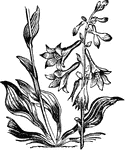
Day-lily
"A genus of plants of the natural order Liliaceae, having a perianth with bell-shaped limb, and sub-cylindrical…
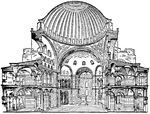
Hagia Sophia
Cross section of Hagia Sophia in Istanbul (historically Constantinople). The Greek name Hagia Sophia…
Basset Horn
"A wood-wind instrument, not a "horn," member of the clarinet family, of which it is the tenor. The…
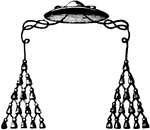
Cardinal Hat
"Cardinal, an ecclesiastical prince in the Roman Catholic Church, who has a voice in the conclave at…

Langen's Collector
"Langens arrangement is a somewhat similar combination, the cone being made into a bell with perforated…
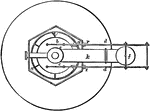
Langen's Collector
"Langens arrangement is a somewhat similar combination, the cone being made into a bell with perforated…
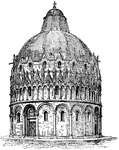
Baptistery of the Duomo
A building or a portion of a building in which is administered the right of baptism.

Thomas A-Becket
The Archbishop of Canterbury, Thomas A. Becket, did not think it was right to consent to a law that…
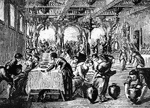
The Marriage at Cana
This painting, by Tintoretto, depicts the Scarcity of the Church of the Madonna della Salute in Venice,…

The Entombment
This painting, by Tintoretto, depicts the Church of S. Francesco della Vigna in Venice, Italy.
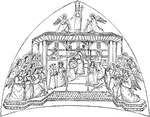
Obedience
This painting by Giottois a piece that is considered Christian art. It is hanging in the church of St.…

Florence
This view of Florence shows the Duomo (cathedral) on the right and Giotto's Campanile (tower) on the…

The Daughter of Herodias Dancing Before Herod
This painting is by Giotto. It is fresco with many different levels. It can be found in the Peruzzi…

